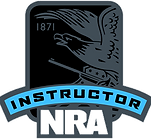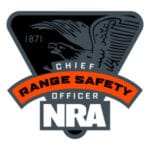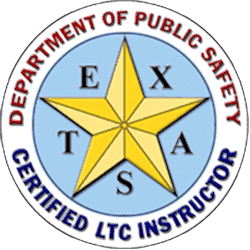Take care of your magazines to avoid the most prevalent cause of handgun malfunctions. How to do Pistol Magazine Maintenance? The magazine is an essential component of every pistol and is also one of the most overlooked aspects.
And, regarding dependability, the magazine is often the source of stoppages. One of the reasons magazines are sometimes overlooked is their low cost, especially when compared to the cost of the weapon and ammo. Shooters will undoubtedly take better care of handgun magazines if they cost $250.
Shooters mishandle pistol magazines. Would you toss your gun on the ground? No. Yet that is where the magazine always goes after being ejected. We not only throw them on the ground but often stomp on them, particularly while taking a pistol training course.
Even though our magazines get clogged with dust and debris and become dented and distorted, we often want them to remain operating after bouncing off the pavement. Isn’t it a little crazy to expect one of the cheapest components of our pistol to withstand such abuse and never fail to perform? Of course, it does, which is why periodical upkeep is so crucial.

Pistol Magazine Anatomy:
Pistol magazines are composed of a housing containing a spring, a base plate, and a follower. The accommodation includes all these elements and the ammo you put into it. The base plate holds everything in position, and the spring maintains adequate tension on the follower, pulling the ammo up and into the gun.
The magazine’s feed lips keep the top round at the appropriate angle, allowing it to be correctly fed into the pistol’s chamber. After the final round is shot, the follower contacts the slide stop on the pistol, locking the slide to the rear and informing you that your pistol is out of ammunition.
Suppose a magazine becomes broken or unclean enough. In that case, it will no longer function correctly. You will most likely experience a pause between your first and final rounds.
Pistol Magazine Maintenance Tips:
Number Your Magazines:
It is essential to maintain your magazines to avoid this. The first step in doing so is assigning each magazine a unique number, which helps you distinguish between them and keep track of their performance. Keep a journal with your handgun to record any stoppages and the magazine that caused the blockage.
If a specific backup often occurs with a particular magazine, you may fix or discard it. It’s also a good idea to keep track of when each magazine was bought and whether or not the magazine spring was replaced. Take apart a fresh magazine and measure the length of the spring for future reference.

Disassemble And Clean:
You should replace magazine maintenance after each range session or whenever you detect a magazine has grown unclean. Remove the base plate and pull off the magazine spring and follower. Inspect the spring to ensure it is not unduly compressed, and look for nicks or wear on the follower.
Also, inspect the magazine feed lips to ensure they are not twisted or damaged. We’ve found that using an air compressor to blast away debris or grime is the best method to clean the magazine body and components.
Remove Carbon Buildup:
Wipe down the magazine as well to eliminate any carbon fouling. You may clean the magazine with a solvent or gun oil, but be sure to wipe it dry afterward. Pistol magazines are intended to function dry because greasy magazines collect dirt and debris when they fall to the ground.
This dirt and debris may not only cause magazine failure. Still, they can also be transmitted to the internals of your pistol and create much more costly issues.
The longer you keep your magazines in good condition, the longer they will last, and the more dependable your pistol will be. In certain circumstances, well-maintained magazines may outlast your firearm. Most of the time, you’re just not firing your pistol enough.

Magazine Maintenance Don’ts:
So, what are the do’s and don’ts of magazine maintenance? Let’s begin with the “don’ts”:
- You shouldn’t thoroughly clean the magazines without dismantling them. If you try, the cleaning equipment might become caught or even harm the magazine.
- Ultrasonic cleaners may peel the paint off metal magazines and dissolve the plastic in magazines and followers.
- Polymer magazines are self-lubricating, so there’s no need to grease them.
Magazine Maintenance Dos:
The following things appear on the to-do list now:
- Eye protection is essential; a spring or follower to the eye might cause serious injury
- Typically, regular gun cleaning chemicals are safe, but you should double-check.
- If you need to clean or lubricate anything, make sure you have enough clean paper towels or disposable fabric cloth on hand.
- Dismantle the magazine carefully; if you don’t know how a video will show you.
- Thoroughly clean and examine all parts, looking out for grime, carbon, corrosion, wear problems, and slack springs.
- All excessively worn parts should be replaced; repair and upgrade kits are available from companies.
- Remove any traces of cleaning, then add a thin layer of oil to your metal magazines and a dry, non-evaporating lubricant to your springs.
- You should put the magazines back together in the same sequence you took them apart.
- Handloading and manually cycling a complete ammunition magazine is an excellent way to test its functionality and spot any binding or feeding problems.
You may now relax knowing that your few minutes of labor will significantly increase the magazine’s shelf life.
When you’re ready to get your Texas License to Carry (LTC), make sure you choose a premier training provider. Conceal Carry Academy and LTC Training Texas are committed to offering the best firearms training possible. When they need information on firearms safety or they want to take a Texas LTC class, gun owners trust the expertise of the pros from Conceal Carry Academy. If you have questions about any aspect of gun ownership in Texas, contact us today













